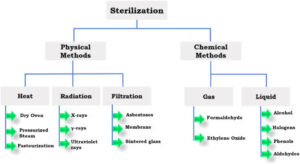How to Make the Choice between Ethylene Oxide or E-Beam Sterilization
Medical device manufacturers choosing to sterilize their products and packaging face numerous options. One of these choices is between Electron beam (E-beam) sterilization and ethylene oxide (EO). Sometimes, the choice is easily made based on factors such as product limitations and sensitivity to radiation or heat, but at other times, either method seems suitable. In these cases, time-to-market and cost considerations might be the determining factors.
E-beam sterilization uses ionizing radiation at high doses. While it is suitable for a variety of materials, it is best for uniform and small products with low densities. One advantage of the method is its quick processing time of minutes or hours, while EO sterilization takes days.
EO sterilization uses gas diffusion and requires breathable packaging so that the gas can penetrate it. The process can be used for many types of products and materials, but it has several limitations as well. The product or package needs to tolerate vacuum and pressure changes, as well as high temperatures.
“The choice is based on your desire for flexibility and speed of processing,” says Bill Young, Vice President at Sterigenics, a provider of contract sterilization services. “Small products that don’t contain drugs and are packaged with breathable packaging can go with either one.”
Other considerations include differences in validation, testing, cost, and time-to-market. There are tradeoffs with either method, says Young.
“The validation for EO might take four to 12 weeks, whereas initial E-beam validation for one product might only take four to six weeks. However, with E-beam validation, every configuration has to be checked again and go through testing. In terms of re-validation for EO, it might only have to be done once every year or two years, whereas for E-beam, those audits are necessary every three months or so. If a customer is using parametric release for EO, the testing cost isn’t significantly different. It might be less expensive for EO because of the need to do quarterly dose audits [when using E-beam]. If a client is not using parametric release, but using BI (biological indicators) testing, then every load requires BI testing for EO, so testing costs would be higher in comparison than for the continuous process of E-beam," says Young.
When either method seems suitable, the costs of installing and working with E-Beam versus EO may be the final factor in choosing one over the other.
“The installation cost for an E-beam unit is significant, depending on the power and the dose one is trying to use,” says Young.
“To install one, you also have to provide barriers to protect workers. Generally speaking, installing a powerful E-beam unit might be anywhere from 1.5 to 2 times the cost of installing an EO process. The E-beam units are very sophisticated and reliable, however, the parts may be costly and may require a long lead time to replace. It requires a unique skill set and an understanding of radiation. We see higher energy consumption with E-beam, but EO also requires significant amount of energy because there are different phases to the process," says Young.
By Camilla Andersson
Freelance Journalist



